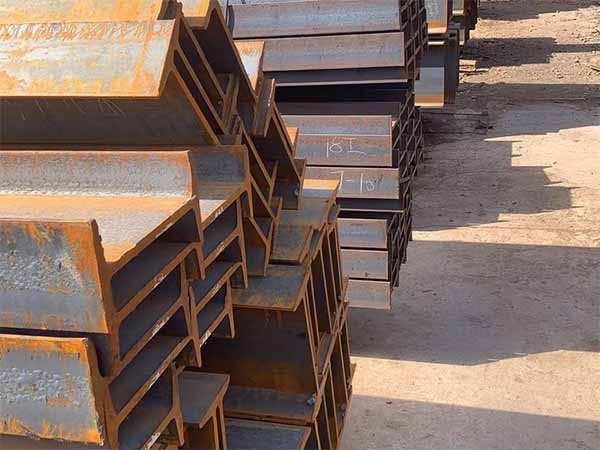Hot-rolled steel is one of the most important intermediate or terminal products in the steel production process. It mainly refers to heating the steel billet above the recrystallization temperature and rolling it into various shapes through a rolling mill. Its application is extremely extensive, covering numerous fields such as construction, machinery, automobiles, energy, and transportation. The following is a detailed explanation of the main application scenarios of hot-rolled steel:
1. Field of building structures
Hot-rolled steel (such as hot-rolled section steel, H-shaped steel, Angle steel, channel steel, sheet piles, etc.) is a core material for building frameworks and large-scale infrastructure, and is widely used in load-bearing structural components such as beams and columns in high-rise buildings, industrial plants, and large venues. Hot-rolled steel plates and sections are often used for the main beams of Bridges and bridge deck support components, while hot-rolled steel sheet piles are mostly used for deep foundation pit support and flood control walls of docks, etc.

2. Mechanical manufacturing and heavy equipment
Hot-rolled steel is also frequently used in the manufacturing of various machinery and equipment, among which hot-rolled medium and heavy plates and extra thick plates are the cornerstones of heavy machinery.
High-strength hot-rolled steel plates are used for key structural components (such as tracks, frames, and booms) of construction machinery like excavators, cranes, and bulldozers.
Pressure vessels such as boilers and gas storage tanks must use pressure vessel steel plates that strictly comply with standards. Hot-rolled round steel and square steel can also be used to manufacture components such as gears, shafts, wheels and connecting rods.
3. Automobile Manufacturing and Transportation
Apart from the body panels of automobiles which are mostly made of cold-rolled high-strength steel, the load-bearing components such as the rims, frames and crossbeams of vehicles often use hot-rolled pickled plates or high-strength hot-rolled plates. Hot-rolled steel is also widely used in the frames of trucks and the cargo compartments of heavy-duty trucks.
4. Energy industry
Hot-rolled steel also plays a crucial role in the energy industry and is widely used in power plants, wind power towers, nuclear power facilities and other fields. It can be used to manufacture transmission towers, wind turbines and solar panels. Among them, hot-rolled steel pipes can also be used in oil and gas pipelines for transporting oil and gas, steam and chemical media.
5. Industrial pipe manufacturing and welded parts
Hot-rolled strip steel is the main raw material for manufacturing welded steel pipes. Through hot-rolled sheet and coil, various types of welded steel pipes can be produced. Meanwhile, hot-rolled sheet is also often used as the raw material for making cold-rolled sheet and galvanized sheet.
A comparison between hot-rolled steel and cold-rolled steel
The main differences between hot-rolled steel and cold-rolled steel lie in the production temperature and performance characteristics. Hot-rolled steel is rolled at high temperatures and has good ductility, weldability and low manufacturing cost. It is suitable for use in building structures, Bridges and large machinery and other occasions where dimensional accuracy requirements are not high. Cold-rolled steel, after further processing at room temperature, has a smoother surface, more precise dimensions and higher strength. It is often used in fields such as automobiles, home appliances and precision parts that require high surface quality and precise dimensions.
Summary
Hot-rolled steel, with its excellent mechanical properties, low cost and wide processing adaptability, has become an indispensable material in modern industry and construction fields. From infrastructure to shipbuilding, from energy equipment to the automotive industry, the application of hot-rolled steel is indispensable in almost all heavy industrial fields.
